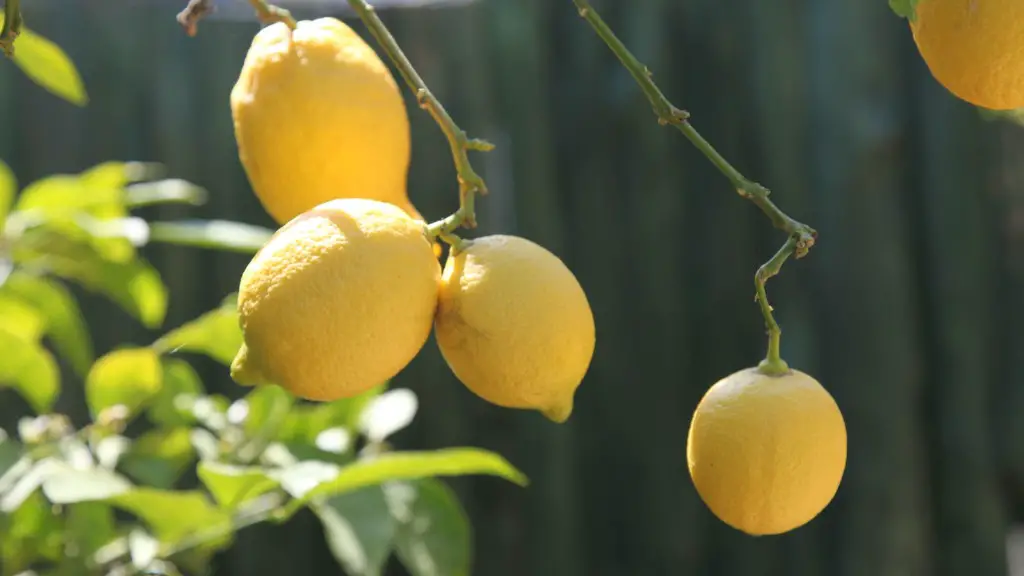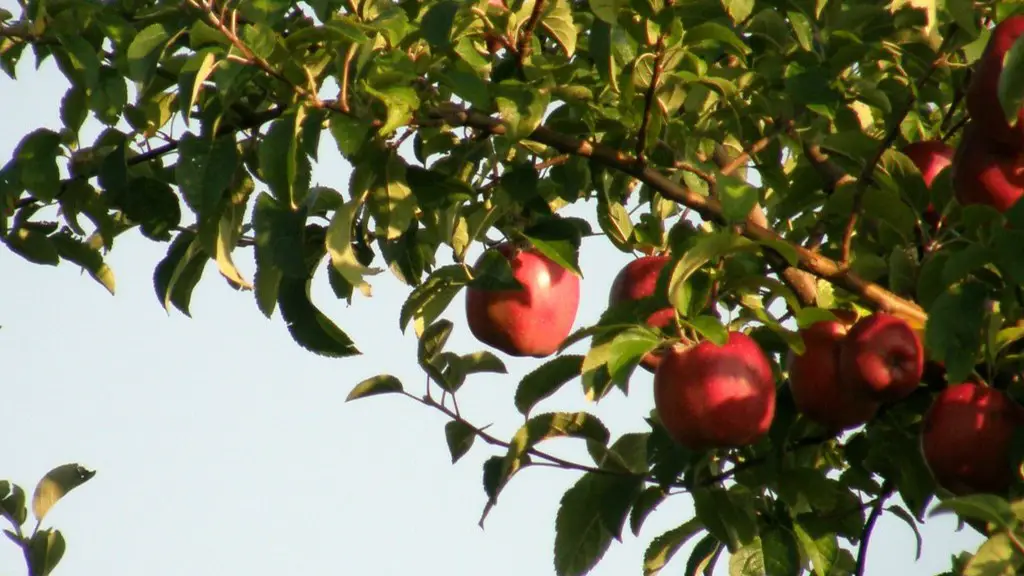Avocado tree from a pit
The avocado tree is a tropical tree that produces one of the most popular fruits in the world. It is believed that the avocado came from Central America and Mexico and has spread to every corner of the world. The avocado tree can be reproduced through its seed or pit, being a fruit that is propagated by this method since pre-Columbian times. It is possible to grow an avocado tree from the pit, with a few considerations and requirements, because the seed or pit requires a warm temperature and enough light to grow, as well as the right amount of fertilizer.
The best way to start the process is to clean the avocado seed, removing the peel and any excess fruit left on the surface of the pit. Then, it should be dried for two to three days, so that a small tail begins to sprout from the bottom, which is a sign that the seed is ready to be planted. Unless the seed is pre-sprouted, it should be planted between a quarter of an inch and one inch deep in a pot filled with a well-draining potting mix. Once it is planted and watered, the pit should remain in the sunny spot with a temperature of at least 70 degrees Fahrenheit.
By providing good irrigation and humidity levels, the seed should germinate in four to six weeks, with a stem beginning to protrude and growth emerging around the stem. In six to eight weeks, new leaves will grow rapidly and the seedling will need to be transplanted to a bigger container as soon as possible, as the container it was previously planted will no longer be big enough for the seedling’s roots.
The avocado tree should be thorougly watered during the first few weeks, allowing the soil to drain before adding too much water, as they are prone to waterlogging. A balanced fertilizer should also be provided, aiming to not over fertilize as high levels of fertilizers can cause foliage damage. Maintenance is also necessary, as pruning and root pruning must be done from time to time.
It is also important to take into account the necessary conditions for an avocado plant to bear fruit. It takes between three to five years for the tree to flower and set fruit, but for it to be able to give its best result, the plant should be exposed to a variety of temperature and humidity levels, as well as provided with a sunny spot so that it can receive the proper light and exposure to pollinators.
Avocado trees grown from a pit can also be affected by different disease and pest-related issues, such as root rot, powdery mildew, aphids, and mites, which can be prevented by making sure there is proper space between plants, providing good regimens of irrigation and fertilizer, and proper removal of old and dead foliage.
Although the process for growing an avocado tree from a pit is relatively simple, a lot of considerations and requirements should exist for the procedure to be successful, from proper temperatures and light to the necessity of irrigation and fertilization.
The process of planting an avocado pit
When planting the avocado seed, it is important to have in mind the right amount of soil and temperature to ensure healthy growth of the plant. The container should be deep enough, so that part of the pit should be underground and the entire pit should be appropriately covered since the tail should be pointing downwards. Sunlight should also be covered, providing enough warm temperatures to the seed. It usually takes between 8-14 days for the seed to germinate, but if the warm temperatures are not provided, the seed will remain dormant and the process will not be completed.
The process of germination will create the root sprouts and the hypocotyls, which are the two parts of the seedling, but both should be soaked in water for about 20 hours for their cells to be activated and begin their growth.
The water should be kept shallow, so no more than one-third of the pit should be underwater, and should be changed often. The seedling should remain in the same spot at least for the first weeks, providing it with warm temperatures and indirect sunlight until it cracks and the true leaves begin to sprout.
For a healthy and success planted pit, it should be provided with enough water, fertilizer and sunlight, allowing the seedling to fully develop the root, the stem and the leaves. As soon as the seedling outgrows its pot, it should be transplanted to a larger pot with enough depth and root surface. An avocado tree requires regular maintenance and care, as any action taken with the seedling can range from improving results to killing the plant.
Harvest and grafting
Once the avocado tree starts flowering and setting fruit, it can take anywhere from 4-6 months for the fruit to reach its maturity and be ready for harvest. Although the tree can bear fruit with only the seed, it will require grafting to produce fruit earlier, meaning the use of a bud from the same species to enhance the tree’s productivity. To successfully graft an avocado tree into the seedling, the grafting process includes joining the two parts, which is done by cutting a piece of the stem, taking a bud and attaching it with a rubber band.
The process for creating new trees through grafting is long but fruitful, as the avocado tree can begin to bear fruits up to 2-3 years earlier than through growing a seed. To achieve a successful graft, the avocado tree must be in its vegetative phase, with a strong stem and plenty of vigour to be able to absorb the new growth.
Grafting is a technique used frequently when building commercial orchard and farms, as the avocado trees are combined together to offer as many fruits as possible. The grafted trees have an advantage, as they can be cross-pollinated, ensuring healthy production of fruits and flowers, and enabling further propagation.
The conservation of the seed
When germinating the seed, the original avocado will not be saved, as the sprouting and growth of the tree from the pit destroys the fruit. For the seed to be saved, it must remain dormant until it is exposed to warm temperatures, soil, and light, but its chances for germination naturally decreases in time. Because of this, in many regions, the seed is collected and stored in special locations, being exposed to the desired temperatures and conditions that could provide the ideal conditions for its germination.
The avocado is seen as a blessing in many cultures, as it is not only a delicious, useful and widely consumed fruit, but also one that is simple to reproduce. Nevertheless, its growth still requires plenty of maintenance, carefulness and time in order to achieve a truly fruitful result.
Economic analysis of the avocado tree propagation
The avocado tree propagation is seen as a lucrative industry, with plenty of potential to bear fruits and gain profits. The avocado became a popular choice of investment for farmers and orchards, as it requires only a small initial investment in its propagation and produces a very profitable outcome considering its market value. The price of the avocado fruit has increases has considerably in the past years, increasing the attractiveness of the fruit and its demand.
The market for avocados is still growing in many countries, although some countries have already reached a saturation point. This has had an effect in the global prices, as well as the growth of its interest among investors, who can make a good profit by planting and caring for their avocado tree orchard.
Another aspect to consider is that the increased production of avocados also increases pressure on their own environment, as the trees consume a lot of water and could cause detrimental effects to their natural environments. The increase in the demand for avocado trees can also be seen as a way of preserving the species, as local species are secured and protected.
Sustainability of the avocado tree
The avocado tree has been part of local culture for centuries in many countries, being seen as a nutritious source of food, as well as an important part of folklore and traditional holidays. The harvesting and sale of avocados produced from orchards can directly impact the local economy of countries where they are heavily produced, providing jobs and income to families.
Furthermore, the avocado tree is a very sustainable crop, as it grows in many different climates, supports other species in its environment, and produces a high amount of fruits in a short period of time. When harvested correctly and taken care of in the right way, an avocado tree is capable of bearing fruits up to 10 or 12 years, and even longer under the right conditions.
Finally, the avocado tree is popular not only because it is easy to reproduce and care for, but also because its fruit is one of the most diverse and nutritious in the world. It is consumed in many countries and for different purposes, adding flavor, richness and color to any culinary experience.



